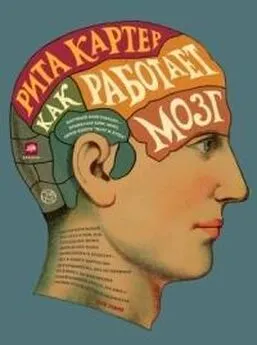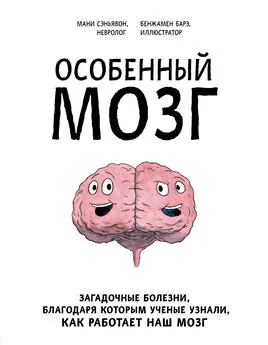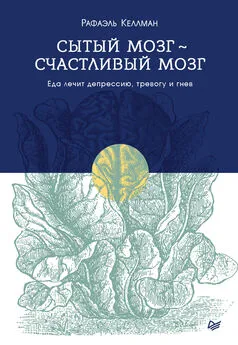Дин Бернетт - Счастливый мозг. Как работает мозг и откуда берется счастье
- Название:Счастливый мозг. Как работает мозг и откуда берется счастье
- Автор:
- Жанр:
- Издательство:Эксмо
- Год:2018
- Город:Москва
- ISBN:978-5-04-095041-6
- Рейтинг:
- Избранное:Добавить в избранное
-
Отзывы:
-
Ваша оценка:
Дин Бернетт - Счастливый мозг. Как работает мозг и откуда берется счастье краткое содержание
Счастливый мозг. Как работает мозг и откуда берется счастье - читать онлайн бесплатно ознакомительный отрывок
Интервал:
Закладка:
252
Kottemann, K.L., The rhetoric of deliberate deception: What catfishing can teach us. 2015: University of Louisiana at Lafayette.
253
Aron, A., et al., Reward, motivation, and emotion systems associated with early-stage intense romantic love. Journal of neurophysiology, 2005. 94 (1): p. 327–337.
254
Fisher, H., The drive to love: The neural mechanism for mate selection. The new psychology of love, 2006: p. 87–115.
255
Savulescu, J. and A. Sandberg, Neuroenhancement of love and marriage: The chemicals between us. Neuroethics, 2008. 1 (1): p. 31–44.
256
Dayan, P. and Q. J. Huys, Serotonin, inhibition, and negative mood. PLoS computational biology, 2008. 4 (2): p. e4.
257
Portas, C.M., B. Bjorvatn, and R. Ursin, Serotonin and the sleep/wake cycle: special emphasis on microdialysis studies. Prog Neurobiol, 2000. 60 (1): p. 13–35.
258
Hesse, S., et al., Serotonin and dopamine transporter imaging in patients with obsessive – compulsive disorder. Psychiatry Research: Neuroimaging, 2005. 140 (1): p. 63–72.
259
Wood, H., Love on the brain. Nature Reviews. Neuroscience, 2001. 2 (2): p. 80.
260
Zeki, S., The neurobiology of love. FEBS letters, 2007. 581 (14): p. 2575–2579.
261
Johnson-Laird, P.N., Mental models and human reasoning. Proceedings of the National Academy of Sciences, 2010. 107 (43): p. 18243–18250.
262
Acevedo, B.P., et al., Neural correlates of long-term intense romantic love. Social cognitive and affective neuroscience, 2012. 7 (2): p. 145–159.
263
STATS | Arranged / Forced Marriage Statistics – Statistic Brain. 2016 2016–08–16; Available from: http://www.statisticbrain.com/arranged-marriage-statistics/.
264
Graham, A., Stepping Off the Relationship Escalator: Uncommon Love and Life – Kindle edition by Amy Gahran. Health, Fitness & Dieting Kindle eBooks @ Amazon.com. 2017: Off the Escalator Enterprises.
265
Twenge, J.M., R. A. Sherman, and B. E. Wells, Changes in American Adults’ Reported Same-Sex Sexual Experiences and Attitudes, 1973–2014. Archives of Sexual Behavior, 2016. 45 (7): p. 1713–1730.
266
Net, G.o.t. Sexy stories, mostly true | Girl on the Net. 2017; Available from: http://www.girlonthenet.com.
267
Net, G.o.t., How a bad girl fell in love. 2016: BLINK Publishing. 336.
268
Wilson, G.D., Male-female differences in sexual activity, enjoyment and fantasies. Personality and Individual Differences, 1987. 8 (1): p. 125–127.
269
Levin, R. and A. Riley, The physiology of human sexual function. Psychiatry, 2007. 6 (3): p. 90–94.
270
McQuaid, J., Why We Love the Pain of Spicy Food, in The Wall Street Journal. 2014, Wall Street Journal.
271
Person, E.S., Sexuality as the Mainstay of Identity: Psychoanalytic Perspectives. Signs: Journal of Women in Culture and Society, 1980. 5 (4): p. 605–630.
272
Weaver, H., G. Smith, and S. Kippax, School‐based sex education policies and indicators of sexual health among young people: a comparison of the Netherlands, France, Australia and the United States. Sex Education, 2005. 5 (2): p. 171–188.
273
Potard, C., et al., The relationship between parental attachment and sexuality in early adolescence. International Journal of Adolescence and Youth, 2017. 22 (1): p. 47–56.
274
Hoffmann, H., E. Janssen, and S. L. Turner, Classical conditioning of sexual arousal in women and men: effects of varying awareness and biological relevance of the conditioned stimulus. Arch Sex Behav, 2004. 33 (1): p. 43–53.
275
Hatzenbuehler, M.L., J. C. Phelan, and B. G. Link, Stigma as a Fundamental Cause of Population Health Inequalities. American Journal of Public Health, 2013. 103 (5): p. 813–821.
276
Winston, J.S., J. O’Doherty, and R. J. Dolan, Common and distinct neural responses during direct and incidental processing of multiple facial emotions. Neuroimage, 2003. 20 (1): p. 84–97.
277
Davila-Ross, M., et al., Chimpanzees (Pan troglodytes) Produce the Same Types of ‘Laugh Faces’ when They Emit Laughter and when They Are Silent. PLOS ONE, 2015. 10 (6): p. e0127337.
278
Ross, M.D., M. J. Owren, and E. Zimmermann, Reconstructing the evolution of laughter in great apes and humans. Current Biology, 2009. 19 (13): p. 1106–1111.
279
Panksepp, J. and J. Burgdorf, 50-kHz chirping (laughter?) in response to conditioned and unconditioned tickle-induced reward in rats: effects of social housing and genetic variables. Behavioural brain research, 2000. 115 (1): p. 25–38.
280
Weisfeld, G.E., The adaptive value of humor and laughter. Ethology and Sociobiology, 1993. 14 (2): p. 141–169.
281
Pellis, S. and V. Pellis, The playful brain: venturing to the limits of neuroscience. 2013: Oneworld Publications.
282
Wild, B., et al., Neural correlates of laughter and humour. Brain, 2003. 126 (10): p. 2121–2138.
283
Selden, S.T., Tickle. Journal of the American Academy of Dermatology, 2004. 50 (1): p. 93–97.
284
Claxton, G., Why can’t we tickle ourselves? Perceptual and Motor Skills, 1975. 41 (1): p. 335–338.
285
Berman, R., The Psychology of Tickling And Why It Makes Us Laugh. 2016: Big Think.
286
Stafford, T., Why all babies love peekaboo. 2014, BBC_Future.
287
Vrticka, P., J. M. Black, and A. L. Reiss, The neural basis of humour processing. Nat Rev Neurosci, 2013. 14 (12): p. 860–868.
288
Messinger, D.S., A. Fogel, and K. L. Dickson, All smiles are positive, but some smiles are more positive than others. Dev Psychol, 2001. 37 (5): p. 642–53.
289
Scott, S., Beyond a joke: how to study laughter, in Brain Flapping. 2014, Guardian: theguardian.com.
290
Chan, Y.C., et al., Towards a neural circuit model of verbal humor processing: an fMRI study of the neural substrates of incongruity detection and resolution. Neuroimage, 2013. 66: p. 169–76.
291
Hempelmann, C.F. and S. Attardo, Resolutions and their incongruities: Further thoughts on logical mechanisms. Humor-International Journal of Humor Research, 2011. 24 (2): p. 125–149.
292
Franklin, R.G., Jr. and R. B. Adams, Jr., The reward of a good joke: neural correlates of viewing dynamic displays of stand-up comedy. Cogn Affect Behav Neurosci, 2011. 11 (4): p. 508–15.
293
Pessoa, L. and R. Adolphs, Emotion processing and the amygdala: from a ‘low road’to ‘many roads’ of evaluating biological significance. Nature reviews. Neuroscience, 2010. 11 (11): p. 773.
294
Scott, S.K., et al., The social life of laughter. Trends in cognitive sciences, 2014. 18 (12): p. 618–620.
295
Prof Sophie Scott. 2017; Available from: http://www.ucl.ac.uk/pals/people/profiles/academic-staff/sophie-scott.
296
Berk, L.S., et al., Neuroendocrine and stress hormone changes during mirthful laughter. The American journal of the medical sciences, 1989. 298 (6): p. 390–396.
297
Dunbar, R.I., et al., Social laughter is correlated with an elevated pain threshold. Proc Biol Sci, 2012. 279 (1731): p. 1161–7.
298
Manninen, S., et al., Social Laughter Triggers Endogenous Opioid Release in Humans. The Journal of Neuroscience, 2017. 37 (25): p. 6125.
299
Wildgruber, D., et al., Different types of laughter modulate connectivity within distinct parts of the laughter perception network. PloS one, 2013. 8 (5): p. e63441.
300
Philippon, A.C., L. M. Randall, and J. Cherryman, The Impact of Laughter in Earwitness Identification Performance. Psychiatry, Psychology and Law, 2013. 20 (6): p. 887–898.
301
Uekermann, J., et al., Theory of mind, humour processing and executive functioning in alcoholism. Addiction, 2007. 102 (2): p. 232–40.
302
Samson, A.C., et al., Perception of other people’s mental states affects humor in social anxiety. Journal of Behavior Therapy and Experimental Psychiatry, 2012. 43 (1): p. 625–631.
303
Wu, C. – L., et al., Do individuals with autism lack a sense of humor? A study of humor comprehension, appreciation, and styles among high school students with autism. Research in Autism Spectrum Disorders, 2014. 8 (10): p. 1386–1393.
304
Raine, J., The evolutionary origins of laughter are rooted more in survival than enjoyment. 2016, The Conversation (UK).
305
Gervais, M. and D. S. Wilson, The evolution and functions of laughter and humor: A synthetic approach. The Quarterly Review of Biology, 2005. 80 (4): p. 395–430.
306
Goldstein, J. H. Cross cultural research: Humour here and there. Elsevier.
307
Provine, R.R. and K. Emmorey, Laughter Among Deaf Signers. Journal of deaf studies and deaf education, 2006. 11 (4): p. 403–409.
308
Cowan, M.L. and A. C. Little, The effects of relationship context and modality on ratings of funniness. Personality and Individual Differences, 2013. 54 (4): p. 496–500.
309
Benazzi, F. and H. Akiskal, Irritable-hostile depression: further validation as a bipolar depressive mixed state. Journal of Affective Disorders, 2005. 84 (2): p. 197–207.
310
WalesOnline. No joking but comedian Rhod is Wales’ sexiest man. 2010 2010–12–04; Available from: http://www.walesonline.co.uk/lifestyle/showbiz/no-joking-comedian-rhod-wales-1878454.
311
Krebs, R., et al., Novelty increases the mesolimbic functional connectivity of the substantia nigra/ventral tegmental area (SN/VTA) during reward anticipation: evidence from high-resolution fMRI. Neuroimage, 2011. 58 (2): p. 647–655.
312
Boldsworth, I. The Mental Podcast. 2017; Available from: http://www.ianboldsworth.co.uk/the-mental-podcast/.
313
Boldsworth, I. The ParaPod. 2017; Available from: http://www.ianboldsworth.co.uk/project/the-parapod/.
314
Hyman, S.E. and R. C. Malenka, Addiction and the brain: the neurobiology of compulsion and its persistence. Nature reviews. Neuroscience, 2001. 2 (10): p. 695.
315
Heimberg, R.G., Social phobia: Diagnosis, assessment, and treatment. 1995: Guilford Press.
Читать дальшеИнтервал:
Закладка:










